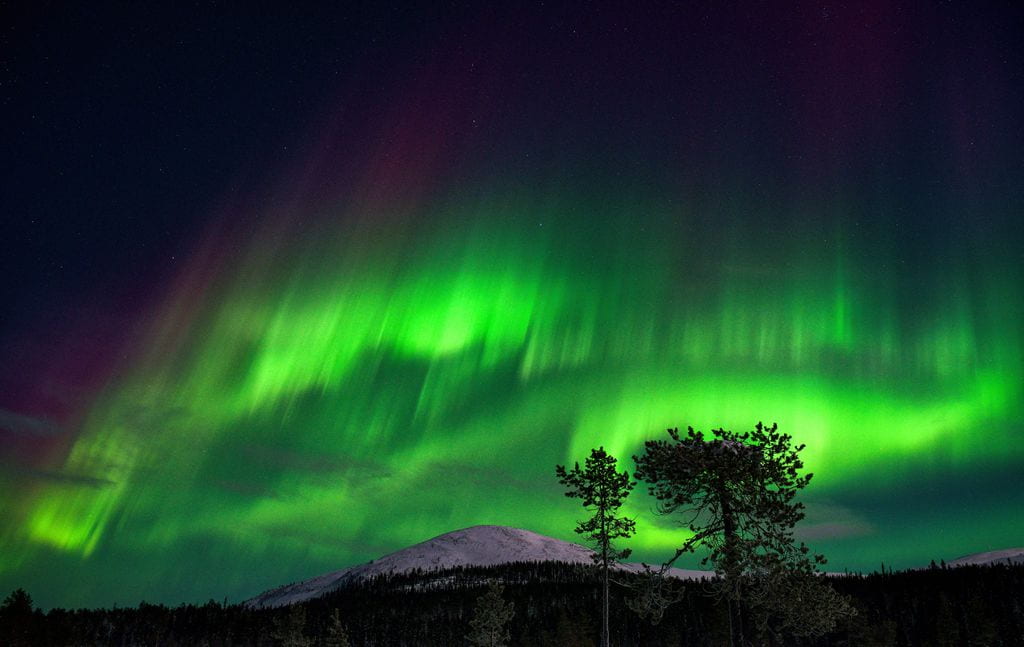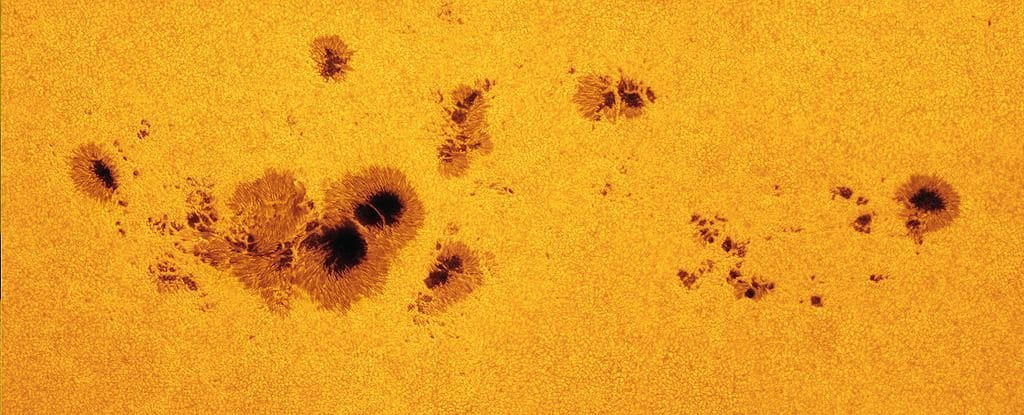I walked outside this morning to donate some bananas to a local food shelter. I forgot my sunglasses, so the Sun shining brightly into my eyes made it hard to see. It was the same as any other non-cloudy day, I figure. Had I looked directly at the Sun (I don’t recommend this!) it would have looked like the same bright circle I’ve seen my whole life. But the Sun is actually quite volatile.
Like all stars, the Sun is constantly losing material by sending out a stellar wind. Stellar winds are fast-flowing “winds” of material (that includes protons, electrons, and atoms of heavier elements) that are ejected from stars. They are a continuous outflow of material that in the case of the Sun “blows” at a speed of 200-300 km/s from quiet regions to 700 km/s from active regions. The solar wind is caused by the extremely high temperature (millions of degrees Celsius) of the corona (the outermost layer of the Sun). Stars like the Sun only eject a small portion of their mass each year in this manner (only 1 part in 10¹⁴ of the Sun’s mass is ejected each year), but this is still millions of tons of material every second (the Sun makes us 99.8% of the mass in the solar system). Over its entire lifetime, the Sun will lose only a tiny fraction of 1% of its mass through stellar winds.
Solar activity waxes and wanes over time along a period known as the solar cycle. The solar cycle lasts approximately 11 years, though this period has been known to last anywhere from 8 to 15 years. This cycle represents the length of time it takes the Sun’s magnetic field’s polarity to flip, meaning the north pole becomes the new south pole and vice versa. The period of time where the Sun has the the least amount of activity is known as the solar minimum, and halfway between the two minima is the solar maximum, when the Sun is the most active. The solar wind interacts with Earth’s upper atmosphere and magnetic field and causes many phenomena, such as the Aurora Borealis and Aurora Australis. The aurorae are produced when solar wind particles accelerated by the Earth’s magnetic field collide with atoms and molecules in the upper atmosphere. As the atoms and molecules de-excite (basically, lose energy) they emit light at specific wavelengths (you can actually figure out what types of atoms are in a gas by finding the wavelengths of light it produces, much like looking at a fingerprint).

A sunspot is a region of the Sun that is less hot than the surrounding region. I use “less hot” instead of “cooler” for a good reason – they are still around 3,000°C! This does pale in comparison to the temperature of the rest of the Sun’s surface, which is a whopping 6,000°C. They are not as hot because they form in regions where the Sun’s magnetic fields are particularly strong, so strong that it keeps some of the heat from the Sun from reaching the surface. Their average size is about that of the Earth. They follow a cycle that matches the solar cycle, known as the sunspot cycle.

Along with solar wind and sunspots are prominences, another type of solar activity. They are large, bright features that extend outward from the Sun’s surface, and extend outward into the corona. They are known as filaments when viewed against the solar disk. They take about a day to form and stable ones may persist for several months. They loop thousands of km into space, and line up with localized magnetic fields.

Finally, another type of solar activity is a solar flare. Solar flares are sudden, unlike sunspots that can last a few days to a few months. They are blasts of charged particles and electromagnetic radiation (such as visible light, radio waves, X-rays…) that emanate from the surface of the Sun. They are distinct from the solar wind in that they aren’t everyday happenings but a highly energetic eruption. These outbursts are caused by the Sun’s rotation and magnetic field. When plasma bubbles up from the interior of the Sun, it can temporarily be confined by the local magnetic fields on the Sun. Eventually the hot plasma bubbles up and breaks free, ejecting vast quantities of high speed particles as a solar flare. Flares are massive – they can be tens of thousands of km across. They arise on the timescales of tens of minutes to hours. They emit large quantities of X-ray and UV radiation that quickly travel to Earth and can cause serious problems, such as geomagnetic storms (a major disturbance in the Earth’s magnetosphere – an area of space around a planet that is controlled by the planet’s magnetic field) and the loss of satellites. The energy of such eruptions are millions of times greater than that of an erupting volcano or hydrogen bomb. They can cause large expulsions of plasma from the Sun’s corona, known as a coronal mass ejection. They can also cause proton storms or solar radiation storms, where charged particles in the solar atmosphere are accelerated to velocities that are large fractions of the speed of light. They can reach Earth in tens of minutes or less, where they interact with Earth’s magnetic field, which can once again create geomagnetic storms and other problems. But the good news is, this creates beautiful aurorae that become visible in places that normally cannot see them.
A solar flare followed by a coronal mass ejection and proton storm shown by three different instruments on the Solar and Heliospheric Observatory (SOHO). The first, in green, is from the EIT (Extreme ultraviolet Imaging Telescope), which images the solar atmosphere. The second two are from LASCO (Large Angle Spectrometric Coronagraph), from both near and from a larger field of view. This works by blocking the radiation with a disk to create an artificial eclipse. The solar disk is represented by the white circle. Video credit: NASA Solar and Heliospheric Observatory
The Sun may look the same to me every day, but up close it can change drastically because of its many eruptive events.